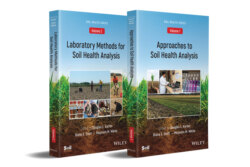Читать книгу Soil Health Analysis, Set - Группа авторов - Страница 31
Pre‐20th Century Soil Awareness
ОглавлениеSoil health is built upon a solid foundation reflecting numerous agronomic and soil science publications and advancements in knowledge. We would be remise not to mention classic scientists, like Darwin and Dukochaev, that spearheaded not only the modern scientific revolution but also our understanding of soil development and biology (e.g., Brevik and Hartemik, 2010; Johnson and Schaetzl, 2015; Ghilarov, 1983). Likewise, it’s imparitive to acknowledge the indigenous ecological knowledge on soil health acquired by non‐colonial cultures over thousands of years (Pawluk, 1992; Raji, 2006). Those roots of soil health are critical, but beyond the focus of this chapter. Therefore, we start with the late 20th Century and in the United States, where the concept of tilth (Warkentin 2008; Karlen 1990) is considered a key driver for what is now recognized as soil health. One example, provided in a review of past, present, and future soil tilth issues (Karlen et al. 1990) is a 1523 book by Fitzherbert, entitled “Boke of Husbandry.” Therein, Fitzherbert wrote that to grow peas (Pisum sativum L.) or beans (Phaseolus vulgaris L.) the soil was not ready to be planted “if it synge or crye, or make any noise under thy fete” whereas “if it make no noyse and wyll beare they horses, thane sowe in the name of God” (Keen, 1931). A similar quote from Fream (1890) described “good” soil as being “open, free‐working, mellow or in good heart” and “non‐productive” soil as “hungry, stubborn, still, cold, or unkind.” For some, these descriptions of “good” and “non‐productive” soils cause them to recall the Biblical connection between soil and life described by Hillel (1991) or even the New Testament parable wherein Jesus describes people and their actions as being similar to one for the four soil categories.
